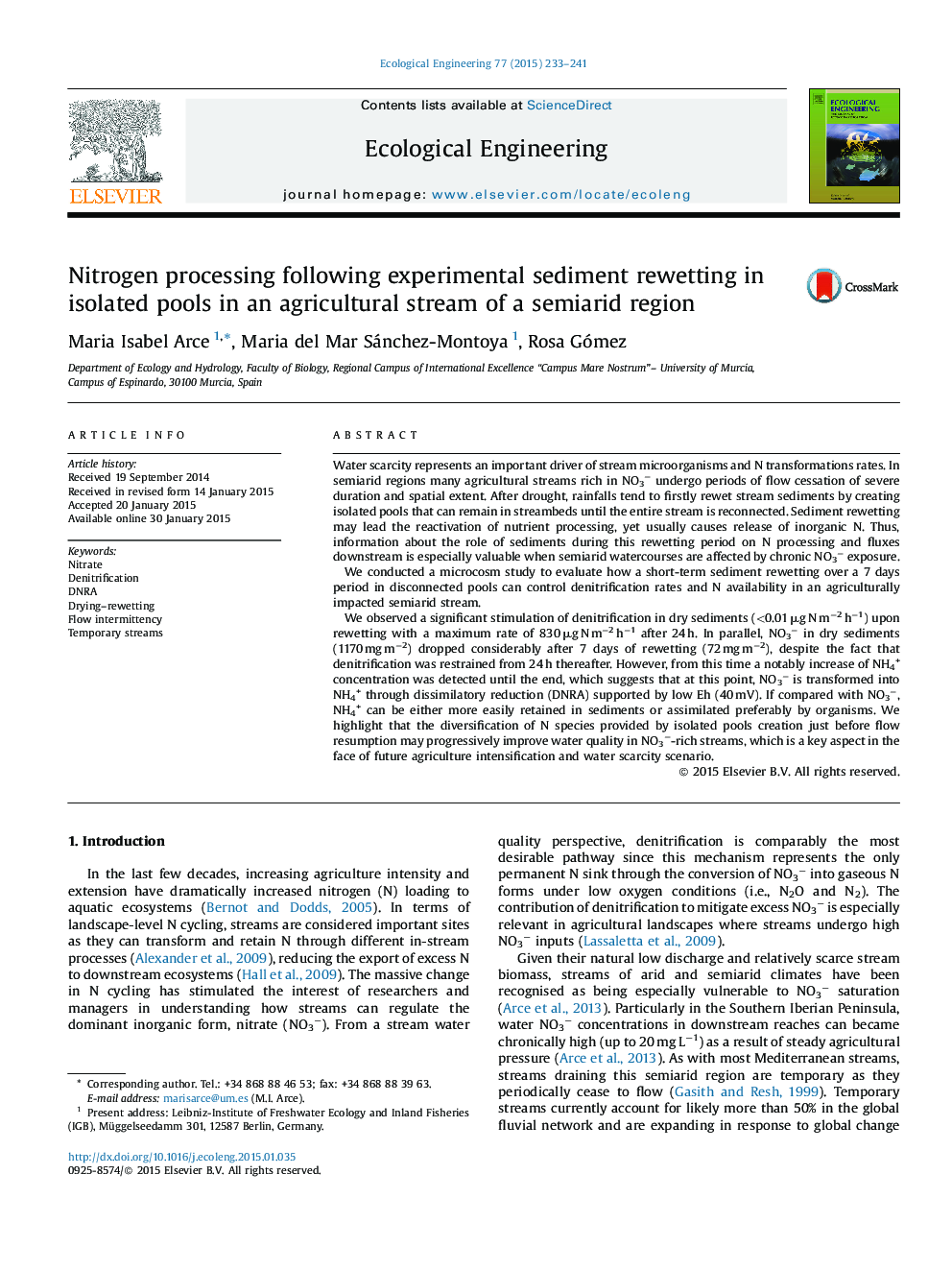| کد مقاله | کد نشریه | سال انتشار | مقاله انگلیسی | نسخه تمام متن |
|---|---|---|---|---|
| 4389269 | 1618022 | 2015 | 9 صفحه PDF | دانلود رایگان |
• Sediment rewetting in pools of an agricultural stream is simulated in microcosms.
• Following rewetting denitrification in dry sediments is immediately activated.
• Rewetting in pools reduces NO3− and stimulates NH4+ production.
• Pools creation favours N processing diversification in agricultural streams.
• N processing diversification can regulate progressively NO3− export downstream.
Water scarcity represents an important driver of stream microorganisms and N transformations rates. In semiarid regions many agricultural streams rich in NO3− undergo periods of flow cessation of severe duration and spatial extent. After drought, rainfalls tend to firstly rewet stream sediments by creating isolated pools that can remain in streambeds until the entire stream is reconnected. Sediment rewetting may lead the reactivation of nutrient processing, yet usually causes release of inorganic N. Thus, information about the role of sediments during this rewetting period on N processing and fluxes downstream is especially valuable when semiarid watercourses are affected by chronic NO3− exposure.We conducted a microcosm study to evaluate how a short-term sediment rewetting over a 7 days period in disconnected pools can control denitrification rates and N availability in an agriculturally impacted semiarid stream.We observed a significant stimulation of denitrification in dry sediments (<0.01 μg N m−2 h−1) upon rewetting with a maximum rate of 830 μg N m−2 h−1 after 24 h. In parallel, NO3− in dry sediments (1170 mg m−2) dropped considerably after 7 days of rewetting (72 mg m−2), despite the fact that denitrification was restrained from 24 h thereafter. However, from this time a notably increase of NH4+ concentration was detected until the end, which suggests that at this point, NO3− is transformed into NH4+ through dissimilatory reduction (DNRA) supported by low Eh (40 mV). If compared with NO3−, NH4+ can be either more easily retained in sediments or assimilated preferably by organisms. We highlight that the diversification of N species provided by isolated pools creation just before flow resumption may progressively improve water quality in NO3−-rich streams, which is a key aspect in the face of future agriculture intensification and water scarcity scenario.
Journal: Ecological Engineering - Volume 77, April 2015, Pages 233–241
